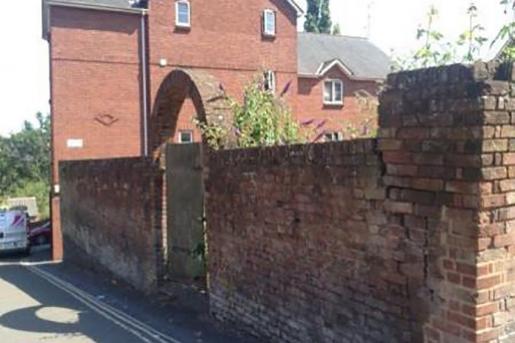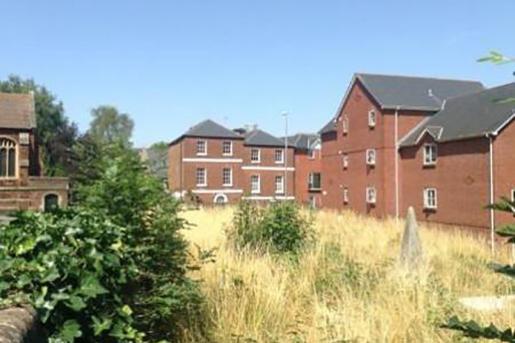- Cemetery
The graveyard lies just outside the city walls in the Southernhay and Friars Conservation Area. Three other nonconformist burial grounds lie within close proximity to the site. These include the Quaker and Wesleyan burial grounds (to the north) and the Jewish burial ground (to the west). The burial ground lies within the Exeter City Area of Archaeological Importance and is included in the schedule of buildings of local importance. The Dissenters’ burial ground is considered to be a heritage asset of high local significance.
The Dissenters’ Graveyard was in use between 1748-1854 by the united congregations of Protestant Dissenters who were mainly Presbyterians and later Unitarians. Members from three Meetings House (Bow, Mint and George’s in South Street) were buried in the graveyard. During the Georgian and early Victorian period Exeter underwent major social, economic and political upheaval, and members of the dissenting community such as Samuel Kingdon (father of ‘Iron Sam’) and Micaijah Towgood, who were buried in the cemetery, were key influential figures. The site lies on level ground above the flood plain of the River Exe on the western edge of the Shutebrook Valley, a former tributary of the River Exe. The underlying solid geology of the area is Breccia of the Dawlish Sandstone Formation (BGS 1995). The north and south boundary walls of the graveyard are mainly the original 1748 brick walls, but they have been repaired several times, most recently in 2014. The southern wall was largely rebuilt in modern brick in the 1990s. The site is overlooked by the Grade II listed former Eye Infirmary (now in 2019 the Hotel du Vin) to the west and by Park View flats, built in the 1980s, to the east. Bull Meadow Park lies immediately to the south. The monuments, headstones and other grave markers were first recorded in 1894, and then again during 1984 as part of a Manpower Services Commission (MSC) project. During the November 2010 survey, 83 visible grave markers were recorded; these comprised 17 tombs/vaults, 2 obelisks, 36 headstones, and 28 foot or flat laid head- and ledgerstones. Most of the markers are broken and in a poor state of disrepair, while a number of these have been moved since the MSC project and propped up against the west and southern walls of the cemetery. There are two obelisk marked tombs, one of which contains the remains (amongst others) of Samuel Kingdon, father of ‘Iron Sam’ Kingdon, foundry owner, the first Conservative Mayor of Exeter in 1836 and founder of the modern city of Exeter.
The graveyard was purchased by a consortium of heritage organisations in 2014 and is now maintained by the Exeter Dissenters’ Graveyard Trust (EDGT). The site was surveyed and cleared of debris in 2014-15. Iron railings and gates were fabricated and installed in 2016, and many of the marker stones have been repaired using conservation techniques. A full history of the graveyard and biographies of many of the people and families buried there are available on the EDGT website (www.edgt.org.uk).
Archaeology and cultural heritage assessment of The Dissenters’ Burial Ground. Tanya James MA.


